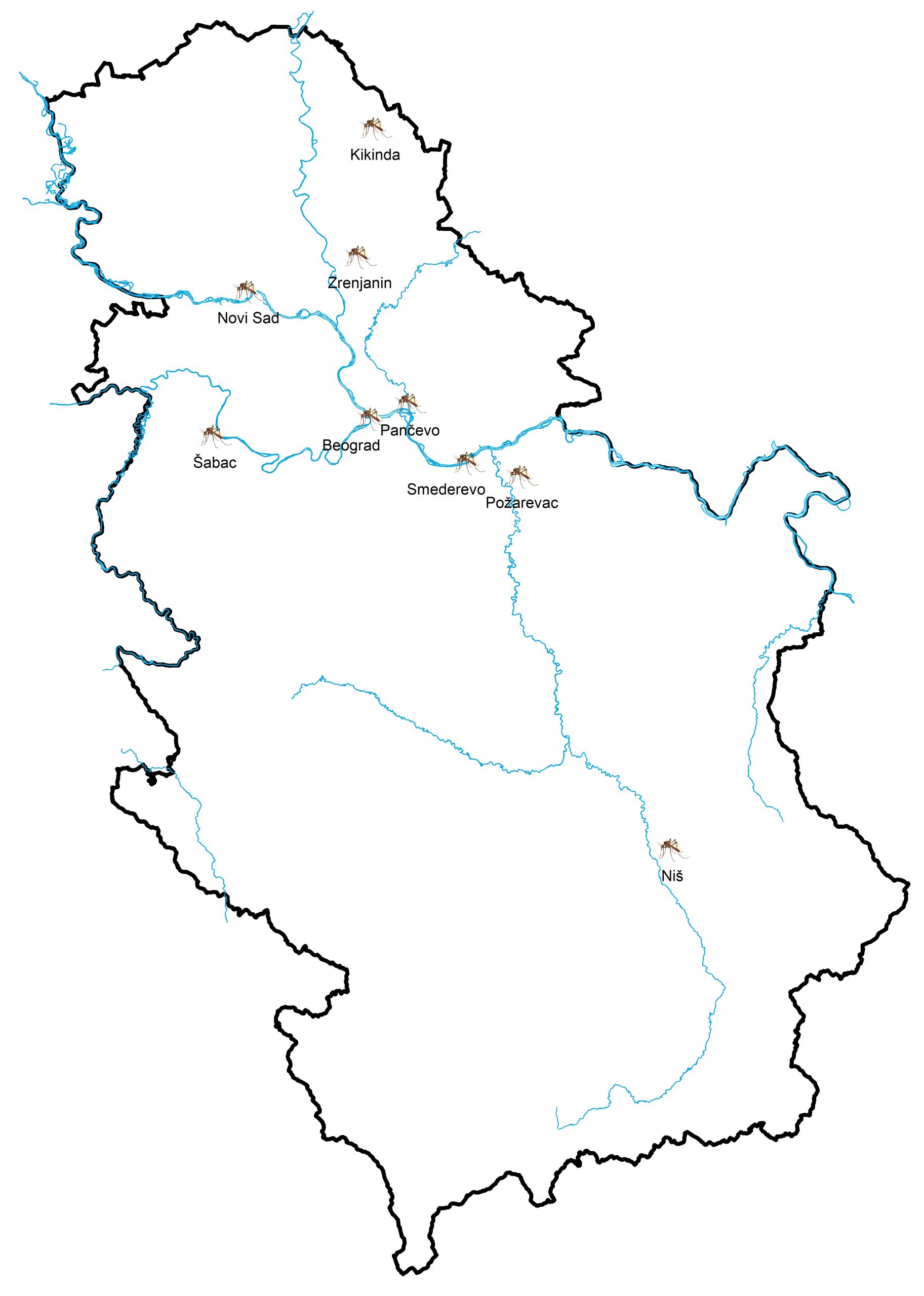Key message: The area of infected mosquitoes is growing, their number decreases
Assessment: The Institute for Biocides and Medical Ecology is conducting a research of the Western Nile virus (WNV) in populations in the territory of Serbia. Sampling of mosquitoes in the field and testing for the presence of the virus have been carried out during the season of mosquito activity (April-September), starting from 2013 to the present day. During 2013 and 2014, regular sampling of mosquitoes was conducted in 26 municipalities, and supplemental on epidemiological indications in another 20 municipalities. From 2015, sampling was carried out in the territories of 10 municipalities located in the Danube and Sava basins. Since the birds are carriers of the virus, the occurrence of viruses in mosquito populations varied from year to year. 2013 and 2018 were record years in terms of meteorological measurements. 2013 was the one of the 5 hottest years in the past 100 years since the measurement started, and 2018 was the hottest in the history of meteorological measurements. Such conditions greatly affected the early and more frequent appearance of mosquito populations that were the carriers of the Western Nile virus. Out of the total number of cities covered by sampling and analysis of mosquitoes in the presence of WNV in 2013, 58% were positive, and in 2018, 73% of the cities surveyed.
In the period from 2011 to 2017, the number of positive locations and cities for the presence of viruses in mosquitoes was significantly lower and ranged from 20% in 2014 to 50% 2015.
Four studies conducted on the territory of the Republic of Serbia in the period from 2007 to 2012 pointed to the transmission of Western Nile virus in the population of mosquitoes, birds and horses. Taking into account these results and the circulation of the Western Nile virus in the neighbouring countries, Romania and Hungary, the Department for the Prevention and Control of Infectious Diseases Serbia implemented the control of Western Nile fever in the human population in 2012. From 1 June to 15 November, on the entire territory of the Serbia control and passive control is being implemented intensively over the fever of the Western Nile. The first patients in the Republic of Serbia suspected of being infected with WNV were registered in the second half of July 2012. The highest number of patients was from the territory of the City of Belgrade (53 patients, 74.6%), the South Banat District (8.5%) and the Srem District (7%). The highest number of cases (86%) was registered in August and September 2012, which coincides with peak activity of mosquitoes.
Western Nile fever occurs worldwide. Epidemics of this disease are recorded in the human population, among birds and horses in America, Africa, Europe, Russia, the Middle East, India, parts of Asia, Australia and the Mediterranean. Circulation of the Western Nile virus has been present on the European continent since the 1960s, but the first epidemic among people was recorded in Bucharest, Romania, in 1996. Since then, cases of people and horses with the disease have been registered in the Czech Republic, France, Italy, Hungary, Romania, Spain and Portugal. During 2010, environmental factors in Central Europe and the Mediterranean countries favoured the transmission of Western Nile virus to humans, so in the central part of North Macedonia in the northern part of Greece the epidemic of this disease was first registered in the human population. Local self-governments are authorised to conduct suppressing of mosquitos and they have done so, mostly with devices from the ground. Application of the biological compound based on Bacillus thuringiensis subsp. israelensisis is effective and environmentally friendly solution, because they are selective to protect the environment from adverse effects, they are also biodegradable, it is not necessary to announce treatment to bee growers because biocides do not affect other organisms. The application of these insecticides is directed to the mosquito habitats of open water systems such as riverine surfaces and brief ponds as well as protected natural assets.
The chemical method involves the application of larvicidal biocides used in mosquito larva sources, or the use of conventional larvicides or insect growth regulators (IGRs) which influence the prevention of larval development of adult mosquitoes. Conventional larvicides are used only in sealed, isolated water systems without direct casting in river basins. The IGR compounds can also be applied on leached surfaces, in canals, industrial and wastewater, with smaller water receivers, manholes, etc.
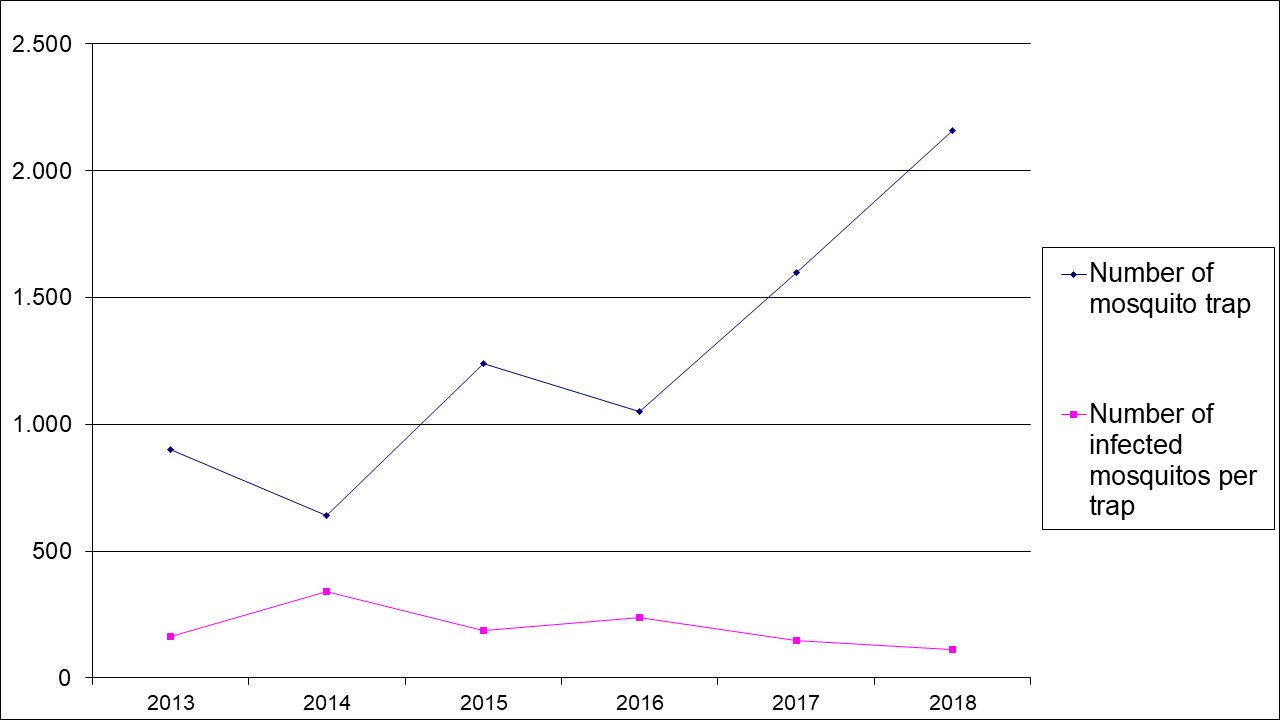
Indicator Name: Trend of mosquito populations infected with WNV in Serbia
Institution/Author: Institute for Biocides and Medical Ecology /dr Ivan Aleksić, Environmental Protection Agency/Slaviša Popović
Use and interpretation:
Key question(s) which indicator helps to answer: What is the number of infected mosquitoes? What is the trend of area of infected mosquitoes?
Use of indicator: to control population growth of mosquito infected with WNV in Serbia
Scale of appropriate use: rural, urban, suburban areas
Potential for aggregation:
Meaning of upward or downward trends: Out of the total number of cities covered by sampling and analysis of mosquitoes in the presence of WNV in 2013, 58 % were positive, and in 2018, 73 % of the cities surveyed. In the period from 2011 to 2017 the number of positive locations and cities for the presence of viruses in mosquitoes was significantly lower and ranged from 20 % in 2014 to 50 % 2015.
Possible reasons for upward or downward trends: Four studies conducted on the territory of the Republic of Serbia in the period from 2007 to 2012 pointed to the transmission of Western Nile virus in the population of mosquitoes, birds and horses. Taking into account these results and the circulation of the Western Nile virus in neighbouring countries, Romania and Hungary, the Department for the Prevention and Control of Infectious Diseases Serbia implemented the control of Western Nile fever in the human population in 2012. From June 1 to November 15, on the entire territory of the Serbia control and passive control is being implemented intensively over the fever of the Western Nile. The first patients in the Republic of Serbia suspected of being infected with GZN were registered in the second half of July 2012. The highest number of patients was from the territory of the City of Belgrade (53 patients, 74.6 %), the South Banat District (8.5 %) and the Srem district (7 %). The highest number of cases (86 %) was registered in August and September 2012, which coincides with peak activity of mosquitoes.
Implications for biodiversity management of change in the indicator: Local self-governments are authorized to conduct suppressing of mosquitos and they have done so, mostly with devices from the ground. Application of the biological compound based on Bacillus thuringiensis subsp. israelensisis an effective and environmentally friendly solution because they are selective to protect the environment from adverse effects, are biodegradable, it is not necessary to announce treatment to bee growers, since biocides do not affect other organisms. The application of these insecticides is directed to the mosquito habitats of open water systems such as riverine surfaces and brief ponds as well as protected natural assets.
Units in which it is expressed: ha
Description of source data: the Department for the Prevention and Control of Infectious Diseases Serbia implemented the control of Western Nile fever in the human population in 2012.
Calculation procedure: From 1 June to 15 November, 2012, on the entire territory of the Serbia control and passive control is being implemented intensively over the fever of the Western Nile. The chemical method involves the application of larvicidal biocides used in mosquito larva sources, or the use of conventional larvicides or insect growth regulators (IGRs) which influence the prevention of larval development of adult mosquitoes. Conventional larvicides are used only in sealed, isolated water systems without direct casting in river basins. IGR compounds can also be applied on leached surfaces, in canals, industrial and wastewater, with smaller water receivers, manholes, etc.
Most effective forms of presentation: Map and graphs
Limits to usefulness and accuracy:
Updating the indicator: Annually
Closely related indicators: Trend of the mosquito population infected with Western Nile virus in Belgrade
Table 1: Trend of mosquito populations infected with WNV in Serbia

Table 2: Presence of mosquito populations infected with WNV in Serbia

Map 1: Trend of mosquito populations infected with WNV in Serbia 2013
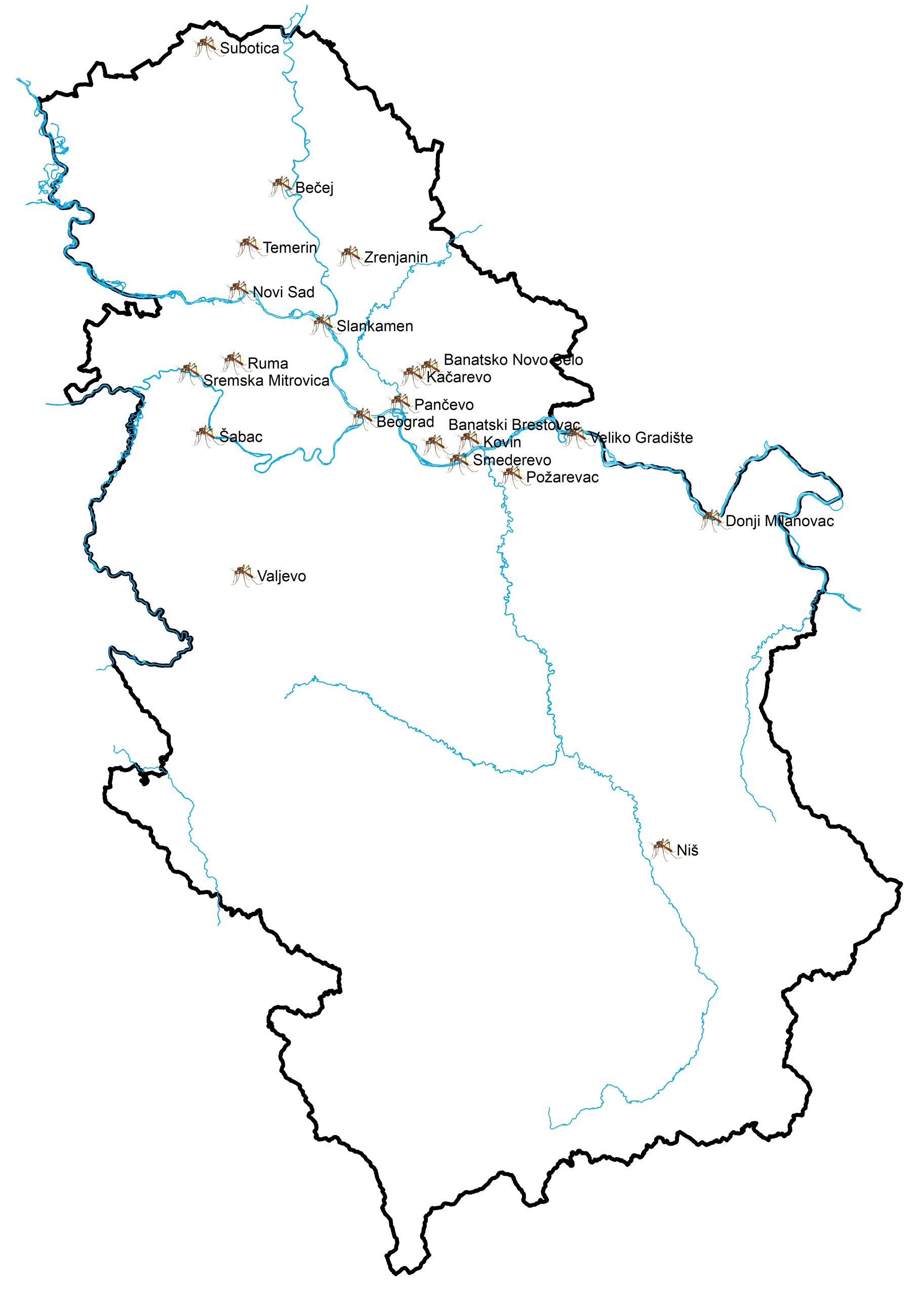
Map 2: Trend of mosquito populations infected with WNV in Serbia 2014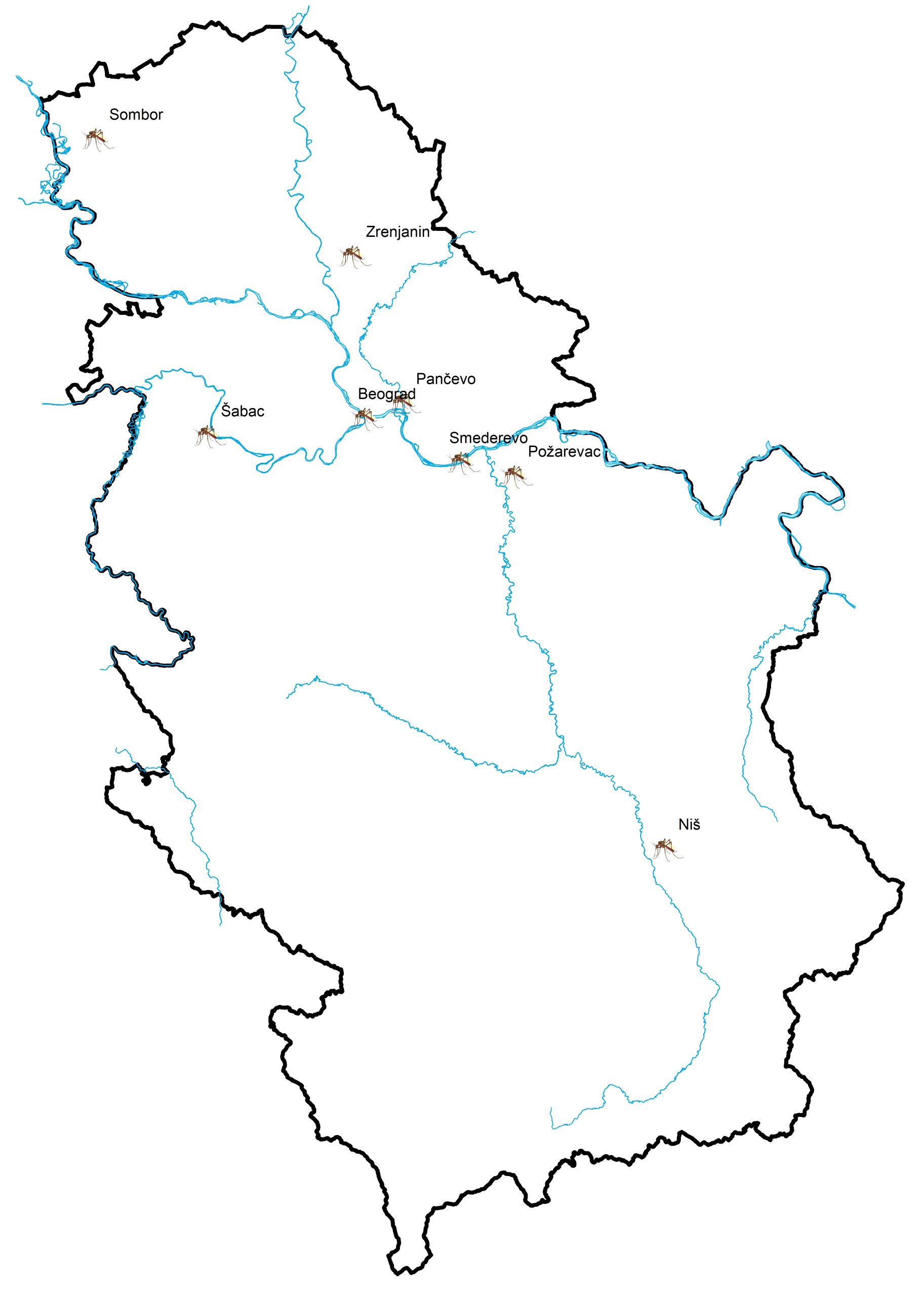
Map 3: Trend of mosquito populations infected with WNV in Serbia 2015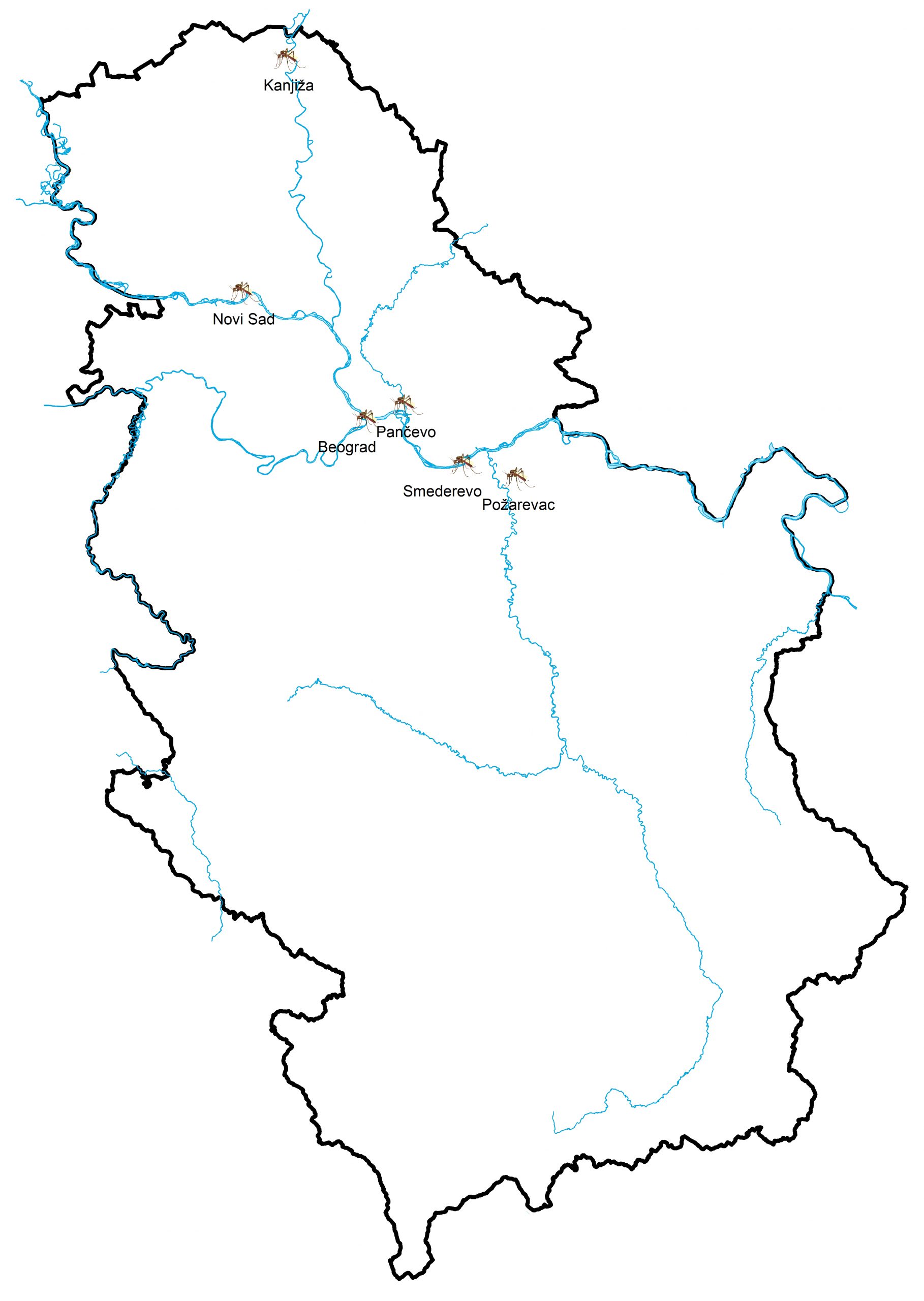
Map 4: Trend of mosquito populations infected with WNV in Serbia 2016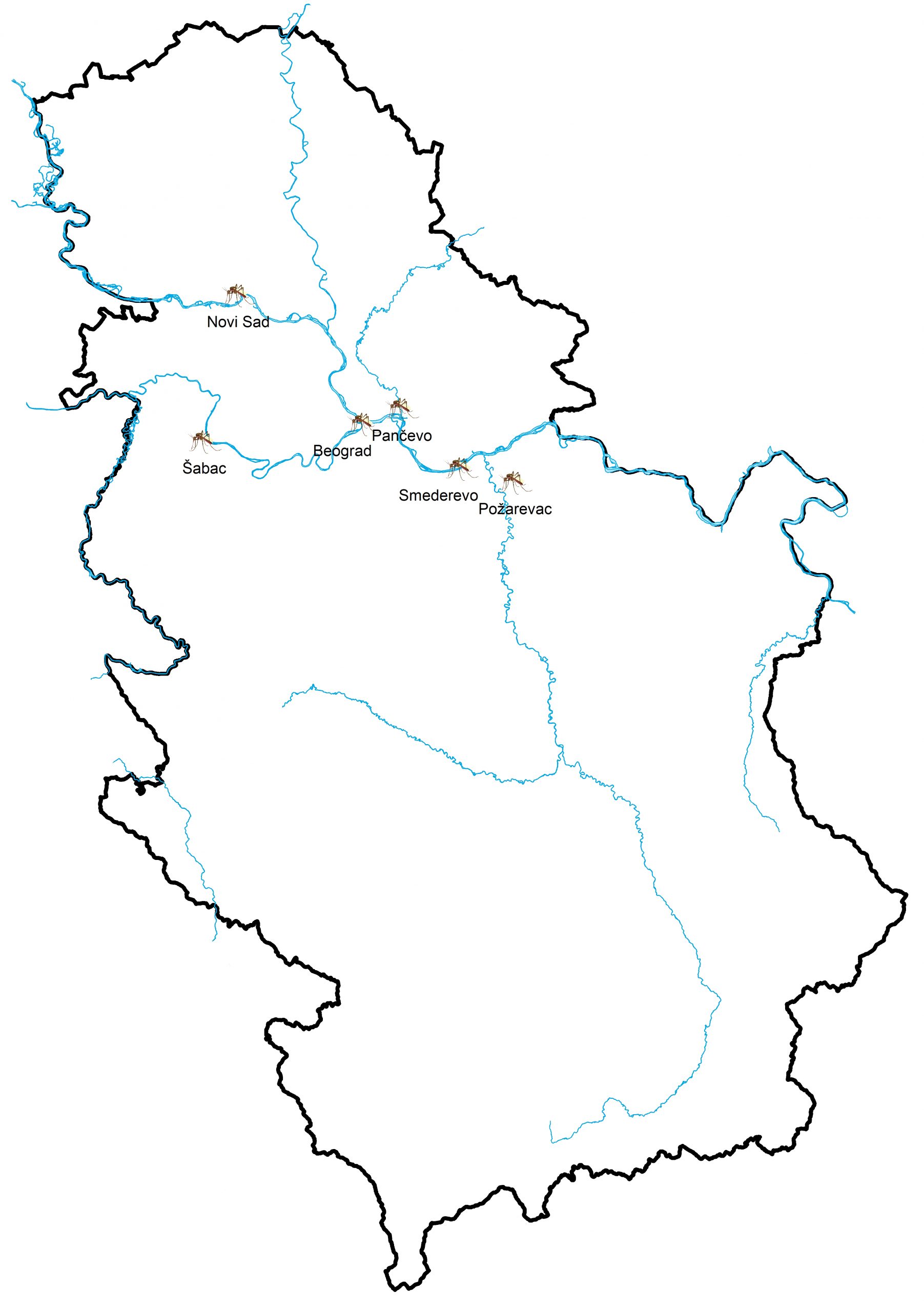
Map 5: Trend of mosquito populations infected with WNV in Serbia 2017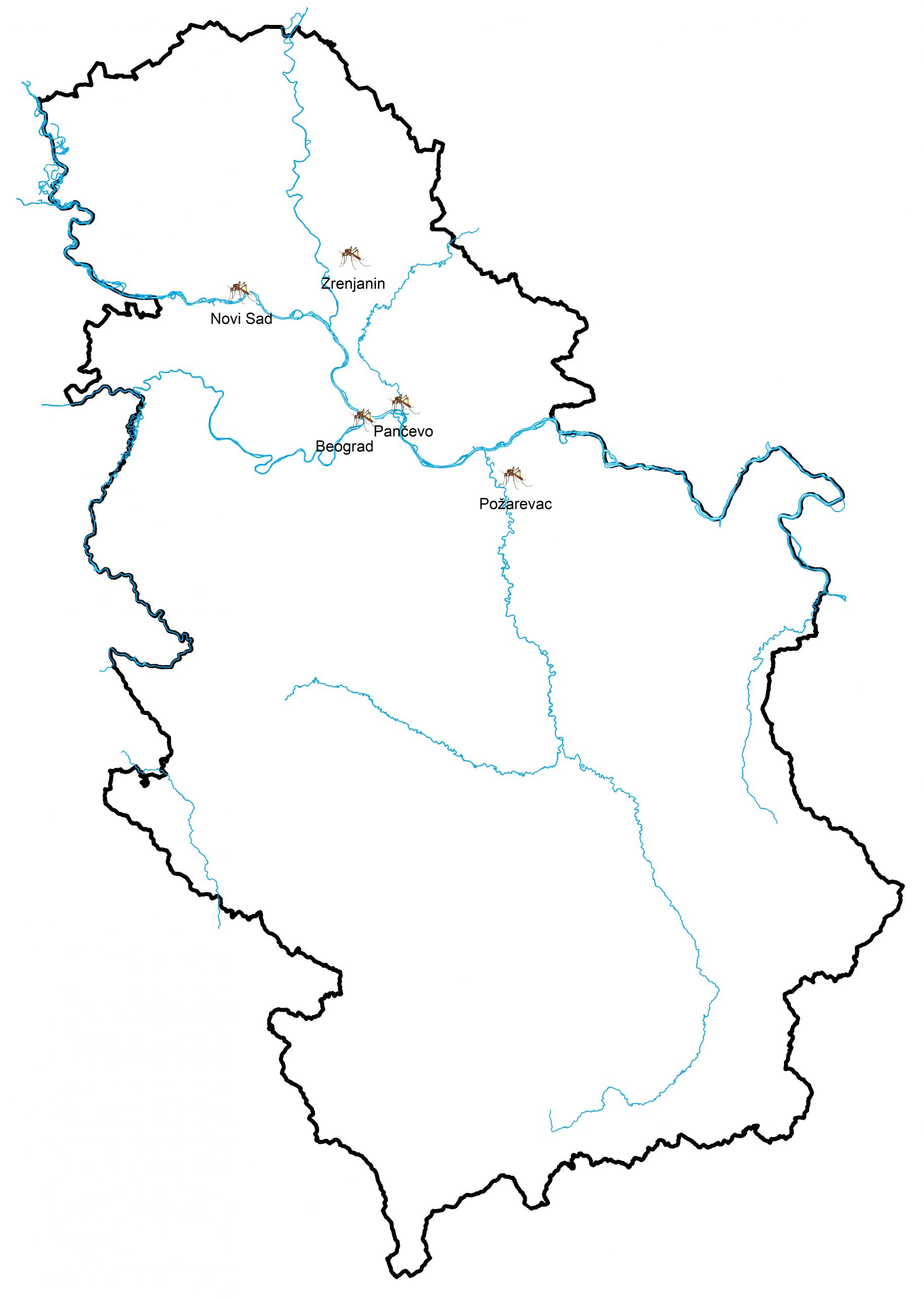
Map 6: Trend of mosquito populations infected with WNV in Serbia 2018